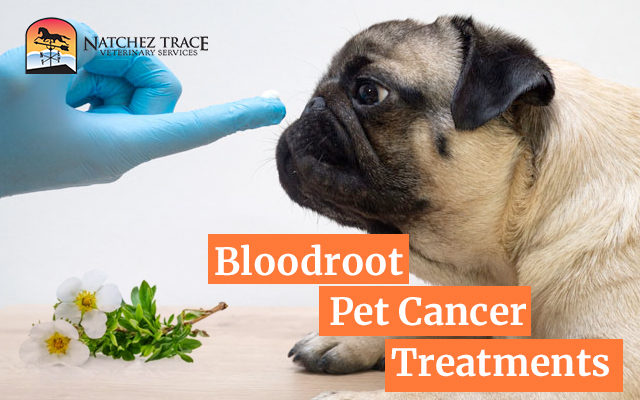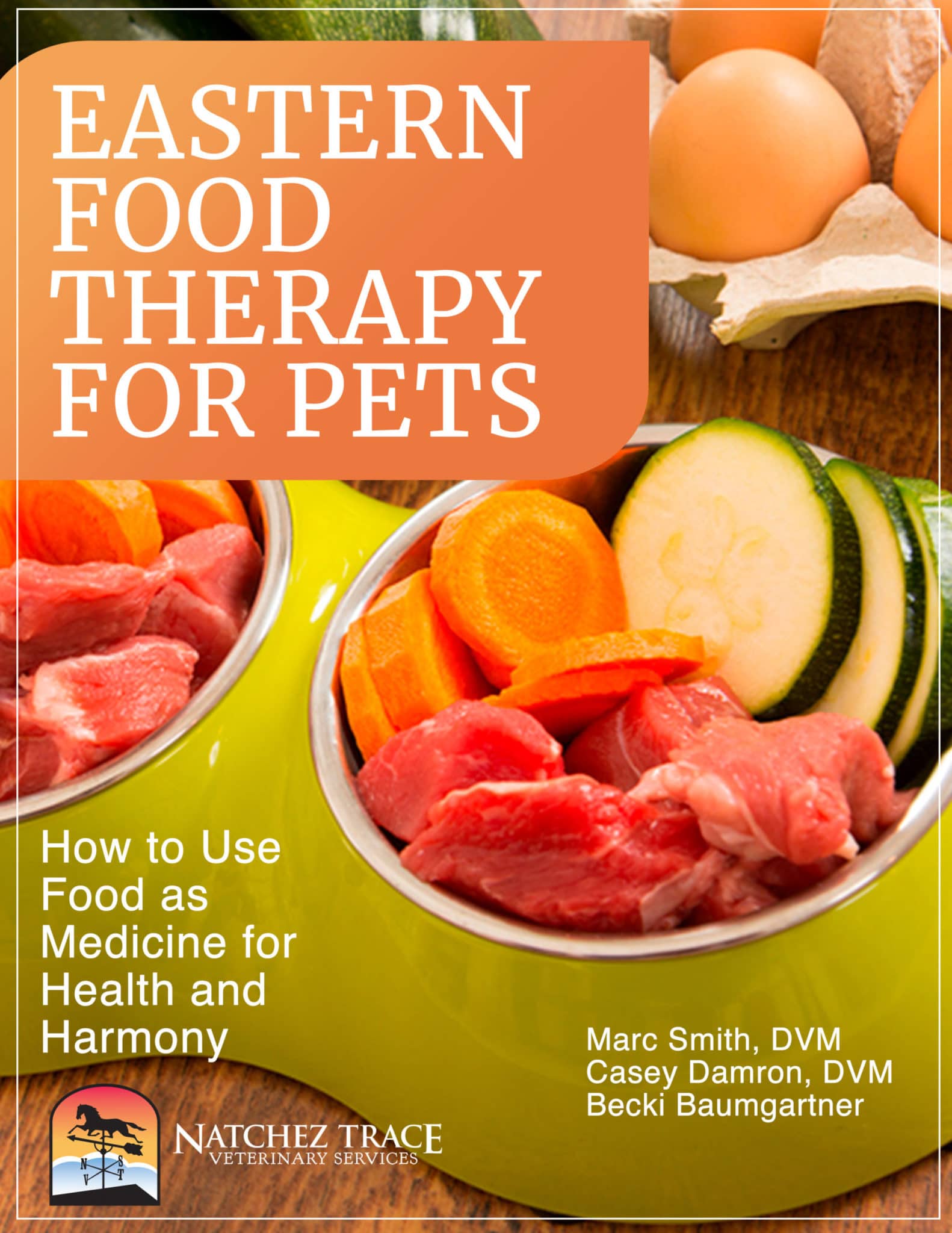Bloodroot (Sanguinaria canadensis) has a long history of use as medicine.
In fact, using bloodroot dates back to early Native Americans using it as a
- dye
- emetic
- wart treatment
- tumor treatment
Traditionally, herbalists have used bloodroot for treating conditions like
- warts
- ringworm
- fungal infections
- sore throats
More recently, however, professionals recognize bloodroot for its effectiveness in treating skin tags and cancer.
Today, we’ll talk about how to use bloodroot to help pet cancer challenges.
Bloodroot is an herb that grows in southern areas of the United States.
The alkaloids found in bloodroot are:
- chelarythrine
- protopine
- sanguinarine
Sanguinarine is the most important of the three alkaloids when using bloodroot as a cancer treatment.
The scientific name for the herb Bloodroot is Sanguinaria canadanesis.
And, it gets the name “bloodroot” because of the reddish sap that oozes out of the broken root.
Neoplasene Bloodroot Pet Cancer Treatments
Marc Smith, DVM uses Neoplasene, a bloodroot derivative, as a treatment for mast cell tumors.
Neoplasene is not “bloodroot” herb per se, but is an isolate of some of the active ingredients in bloodroot.
It functions by causing cancer cells to die via the process of apoptosis.
Apoptosis is programmed cell death– the normal process of cells destroying themselves.
Cancer occurs when apoptosis doesn’t occur often enough.
The lack of apoptosis causes the old, sick, and damaged cells to collect and become cancer.
Neoplasene compounds are available in a topical, oral, and injectable form. They contain the bloodroot extract, halogens and water.
Originally red upon formulation, Neoplasene turns black as it ages.
Neoplasene compounds are excellent for:
- carcinomas
- sarcoids
- viral tissue
- other malignant tissue
Practitioners recommend applying neoplasene directly to tumors and growths then covered with coated gauze.
After topical treatment, many vets recommend you feed your pet neoplasene orally.
The following are some research documents that explain how Bloodroot (Neoplasene) works to treat cancer.
- Preferential Destruction of Cancerous Tissue
- Tips and Protocols for Successful Neoplasene Treatment
- Theoretical Explanation of Neoplasene Effects on Cancerous and Other Abnormal Tissue
- Discussion and Case Histories
“Indian Mud” Bloodroot Cancer Treatments
“Indian Mud” is a lay name for some of the various types of salves and pastes in which the main ingredient is bloodroot.
Some other names for these salves and pastes are:
- Black Salves
- Bloodroot Paste
- Red Salves
- Eschar Black Salves
- Compound X
The main ingredient in all the above formulas and pastes is bloodroot, usually in combination with a caustic such as zinc chloride.
Doctors have used cancer salves for years, dating back to the 1800’s. In fact, they used the salves to treat all types of skin cancers and breast cancer.
Health professionals apply Indian Mud topically to tumors. Then, Indian Mud causes disintegration of the tumor.
However, the application technique and recommendations vary depending upon the particular bloodroot/escharotic combination used.
Click here to read more about cancer salves.
Xxterra Bloodroot Pet Cancer Treatments
Xxterra is a smooth, brown paste. It is a herbal formulation of bloodroot powder and Zinc chloride solution.
It’s also a common treatment for skin tumors in horses.
To use Xxterra, you first apply the paste to the tumor every day until swelling and a superficial wound appear.
Then, a scab will form, which you leave alone until it falls off.
Sometimes you will need to repeat the Xxterra treatment to totally eliminate the skin tumor.
Contraindications, Side Effects, and Interactions of Bloodroot Pet Cancer Treatments
You should avoid bloodroot pet cancer treatments during pregnancy, as it can cause uterine contractions.
Also, keep bloodroot away from your pet’s eyes. It may cause corneal ulcers.
In addition, nausea may be a side effect of some bloodroot pet cancer treatments.
More Powerful Tools for Overcoming Pet Cancer Challenges
You might not be aware, but many cancer-fighting tools are easy to get and use at home.
To realize your true cancer-fighting potential:
- Learn more about dog cancer.
- Ease your dog’s discomfort naturally. PET | TAO Comfort is a blend of Eastern herbs and Western supplements to soothe your dog’s and make him/her more comfortable. (Note: Comfort is not for cats).
- Boost your pet’s immune system with medicinal mushrooms. PET | TAO Complement Immune Mushroom Blend blends together the most powerful immune-boosting medicinal mushrooms on the market in a single product.
- Ease your pet’s stomach upset naturally. Many pets with cancer suffer stomach upset as well. PET | TAO Harmonize GI naturally provides all the digestive enzymes and probiotics your pet needs for optimum gut health.
- Try PET | TAO Freeze Dried Beef Spleen Treats. According to TCVM, spleen helps with digestion and assimilation. Both are challenges often faced by pets suffering from cancer. As few as 5-6 treats per day can make a huge difference in your pet’s health!
- Try a Blood-building TCVM Diet. According to TCVM theory, pets suffering from cancer also often suffer from Blood deficiency. Blood deficiency may due to chemotherapy or cancer itself. PET | TAO Zing dog food builds Blood. You can also try home-cooking for your pet.
- Learn more about TCVM Herbal Remedies. Chinese medicine offers many amazing natural solutions for pet cancer challenges and palliative care. Some good examples are:
Sources:
- All4NaturalHealth.com
- Buck Mountain Pharmaceuticals
- Garden Guides
- HolVet Holistic Veterinary Services
- Introduction to Cancersalves.com
- Vetline Equine
Please note that the information in this article is not intended to replace the services of qualified health care professionals. We recommended seeing a licensed veterinarian to assist in the care of your pet when trying herbal remedies and cancer treatments.








